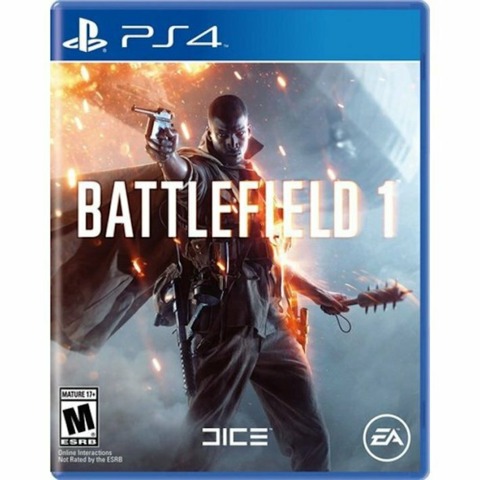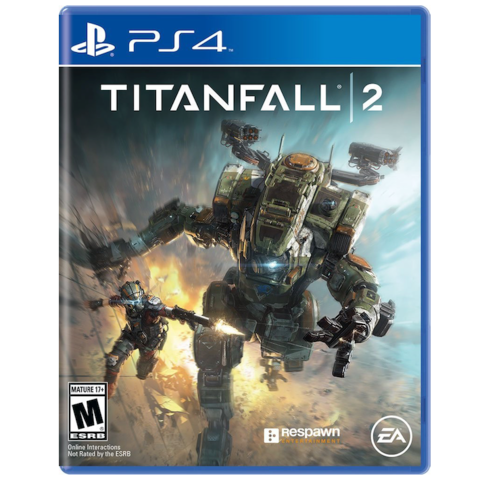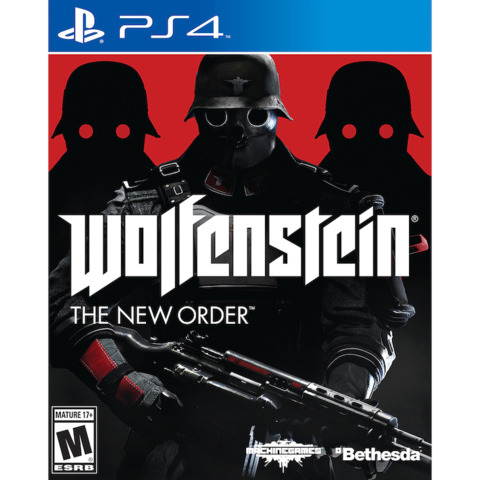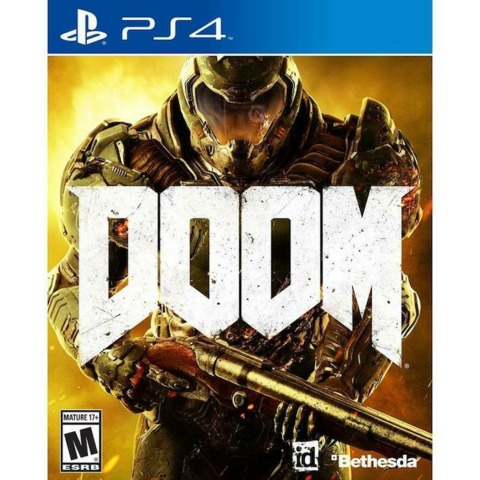Best PlayStation Shooters: 20 Great PS5 And PS4 First-Person Shooters To Play
The best PlayStation shooters come in all shapes and sizes. Some, like Apex Legends and Overwatch, are multiplayer only frag-fests that are best enjoyed with a group of friends. Others, like Destiny 2, borrow from MMOs to create an ongoing, replayable experience where leveling up is as much a part of the draw as pulling the trigger. And plenty, like Metro Exodus and Wolfenstein II: The New Colossus, are interested in telling a gripping story that will keep you invested from beginning to end. No matter what kind of FPS player you are, the best PS4 and PS5 shooters have something to keep you entertained — by yourself or with friends. All of our picks are arranged in alphabetical order and playable on both PS4 and PS5, and some have PS5 enhancements.
For more PlayStation game recommendations, check out our roundups of the best PS4 games and best PS5 games so far. While some of the games listed below have split-screen multiplayer, if you’re looking for more games to play on the couch with friends, take a look at our list of the best split-screen PS4 games.

With 2019’s Apex Legends, Respawn Entertainment brought the flair for movement that defined its Titanfall series to the battle royale genre established by PUBG and Fortnite. With the addition of the kind of hero abilities that make a game like Overwatch tick, a quietly revolutionary ping system that allows players to communicate to their teammates without needing to use a mic, and a roster of firearms that just feel really good to use, you’ve got a battle royale that can hang with the best of them.
See our Apex Legends review.

Taking place during World War I–a conflict criminally undercovered by video games–Battlefield 1 offers a vignette-style campaign with multiple perspectives on The Great War. In the anthology-style War Stories, players take control of troops from diverse national backgrounds in a wide array of battle situations on land and in the air. Drive a tank, fight on foot, pilot a biplane–Battlefield 1’s multifarious perspectives allow for a campaign of unmatched variety. The multiplayer mode offers the Battlefield series’ usual frantic, large-scale battles (though five years out from launch, you may struggle to find a game). Still, DICE’s military shooter is one of the best in the series, and well-worth playing for its single-player alone.
See our Battlefield 1 review.

Assembling BioShock, BioShock 2, BioShock Infinite and all of the trilogy’s DLC, BioShock: The Collection offers an inexpensive ticket to some of gaming’s most unforgettable locales. The original BioShock is still, arguably, the best of the bunch. Even 14 years after its initial release, there is still just nothing like Rapture, the 1940s-era city at the bottom of the sea. Solid shooting mechanics, supplemented by elemental powers that react with the environment in interesting ways (try blasting fire on an oil slick, for example) keep the game exciting, and a rogues gallery of big and garish personalities keep the story enjoyable through its famous twist. Released two-and-a-half years later, BioShock 2 feels like a retread in many ways–it was developed by 2K Marin while original dev Irrational worked on Infinite–with the player returning to Rapture, this time as a Big Daddy. What it lacks in novelty, it makes up for in systemic depth, with a wealth of new combat options. And 2013’s BioShock Infinite is the most polarizing of the bunch, taking the player to Columbia, a floating city in the sky. It’s a beautiful setting, where early 20th century architectural grandeur belies a dark and bigoted core. Much has been said about the ways Infinite handles its core themes, but riding around on skyrails and slamming down on unsuspecting enemies below is undeniably still a ton of fun.
See our BioShock, BioShock 2, and BioShock Infinite reviews.

Gearbox Software’s long-awaited sequel doesn’t do too much that’s new, but it does plenty that’s better. Changes abound. Some are small: A tweak to the minimap makes it significantly easier to detect changes in elevation; a machine on your spaceship retrieves lost guns that may have slipped through the cracks. Some are big, like the fact that you have a spaceship at all, which you can use to fly among locations. As in previous entries, there are an uncountable number of procedurally generated guns and, by and large, they feel great to use. Environments are varied, allowing players to blast their way through the old familiar Pandora desert, a jungle planet, a mountainous world that takes inspiration from the Himalayas, and a futuristic city in the midst of a hostile corporate takeover. There are worthwhile side quests and tough, creative boss fights to tackle with your friends.
See our Borderlands 3 review.

The Call of Duty that started it all. Well, not really it all given that the original release had a “4” in the title. But Modern Warfare is the game that brought Call of Duty into the present, abandoning the beaches of Normandy in favor of modern conflict in a fictionalized approximation of the United States’ own 21st century wars. Missions like “All Ghillied Up” are still a blast to play today, and it’s hard to beat some of the classic multiplayer maps like “Shipment” and “Crash.” And the game has never looked better than in this thorough remastering for modern consoles.

Call of Duty’s second crack at the Battle Royale genre (following 2018’s Blackout, which arrived as a mode bundled in with Call of Duty: Black Ops 4), makes some smart tweaks to the BR formula. For instance, the game introduced “The Gulag,” a prison where downed players are transported for 1-vs-1 gunfight, the winner of which earns a respawn. Innovative mechanics aside, this free-to-play FPS features the tight gunplay, steady progression, and vehicular mayhem that have made Call of Duty multiplayer a popular mainstay for almost 15 years.
See our Call of Duty: Warzone review.

Destiny 2 is a pioneering live-service game and an endlessly fun mash-up of first-person shooter gameplay and an MMO-style meta. Whether you’re playing by yourself, tackling a Strike with friends, or going for world’s first in one of the series’ famous (and famously long) Raids, Destiny 2 has something for everyone. Add in Bungie’s flair for lore and some of the best Proper Nouns in the business and you’ve got an evocative world that simply could not feel better to shoot through with a group of friends.
See our Destiny 2 review.
No one expected Doom (2016) to look much like Doom. Doom 3 had borrowed as much from Half-Life as it did from its predecessors and id Software had toiled for years on an unreleased Doom 4 that, reportedly, looked more like Call of Duty than traditional Doom. So, when Doom (2016) arrived and emphasized frantic gameplay, strafe-heavy gunfights, and a story that took itself just seriously enough to work, it was a big surprise, reinvigorating the pioneering shooter series after a 12-year gap. The multiplayer was and remains underwhelming, but the single-player campaign is a hard-charging FPS that keeps the action moving at all times with a health system that requires players to melee-kill demons to heal up, producing a shower of gore and, just as importantly, health regenerating orbs to collect. This was the best kind of reboot; a game that considered the things that made the original games special and recontextualized them in a thoroughly modern game.
See our Doom (2016) review.

This 2020 sequel is a less focused game than Doom (2016) but a magnificent ballet of bloodshed, nonetheless. Doom Eternal serves up more of what made the 2016 reboot sing. And, with the addition of new abilities like the Flame Belch and Ice Bomb, Eternal injected fresh dynamism into an already brilliant combat system. Incredibly detailed degradation on enemies–the demons’ flesh sloughs off as they take damage–offer at-a-glance updates on your combat progress that fits in brilliantly with the game’s hellfire, brimstone, and blood aesthetic. Outside of firefights, Eternal is slightly more of a mixed bag. The lore is too self-serious and the platforming can be confusing, bu trustrations aside, most of the time, when you’re in a fight, Doom Eternal plays unlike anything else on the market.
See our Doom Eternal review.

Don’t come to Bethesda’s 2015 RPG looking for great shooting. Though Fallout 4 controls better than previous games, with an improved take on the slow-motion V.A.T.S. system, blasting enemies still isn’t the star of the show. Instead, Fallout 4 is a lengthy and expansive role-playing game that serves up plenty of interesting quests in the wastelands surrounding Boston, multiple factions to side with or against, a massive world to explore, and a story that reacts to your choices. Role-playing isn’t as nuanced as in previous games, and companions don’t have much to say, but the downgrades to these RPG mainstays have been made in favor of deeper simulational elements. Plus, if you want to take a walk on the creative side, Fallout 4 has extensive base-building mechanics, which you can use to build impressive hideouts.
See our Fallout 4 review.

If you’ve played Far Cry 3 or 4, you likely know basically what to expect from Far Cry 5, but it’s a thoroughly entertaining romp in the Montana wilderness nonetheless. Players take on the role of a junior deputy sheriff attempting to take down cult leader Joseph Seed and his followers– the Project at Eden’s Gate–who have conquered a large swath of Big Sky Country. As in previous Far Cry games, expect to take out outposts, either with stealth or sheer force, and be monologued at by a charismatic villain. But, if you’re down for the formula, Far Cry 5 is a great time in single-player and co-op, with a gorgeous recreation of the American Rocky Mountains and Great Plains, with plenty of dangerous fauna to contend with. Plus, if you like this one, sequel Far Cry: New Dawn kept the map, but gave it a post-apocalyptic coat of paint.
See our Far Cry 5 review.

The third and final game in 4A’s Metro trilogy, Exodus eschews tight, linear levels for a pseudo open-world as protagonist Artyom and his fellow survivors exit the underground in favor of a speeding train across the frozen Soviet landscape. Based on Dmitry Glukhovsky’s novel Metro 2035 (and heavily inspired by Stalker), Metro Exodus is a rare modern shooter in the Half-Life 2 mode, heavy on set-piece fights and storytelling in a gorgeous world.
See our Metro Exodus review.

What can you say about Overwatch that hasn’t already been said? Blizzard’s hero shooter was the defining FPS for much of the previous generation, with a diverse and massive roster of aesthetically and mechanically distinct playable characters, flashy abilities, memorable maps, and fun and frequent seasonal events. Not too good at the “shooting” part of first-person shooters? In Overwatch, that’s okay; healers are a vital part of any team’s composition. Single-player fans should know: Overwatch is a multiplayer only game.
See our Overwatch review.

Prey, Arkane Austin’s 2017 immersive sim, isn’t as propulsive, violent, or kinetic as other entries on this list. In fact, you can sneak through much of this sci-fi game without firing a bullet. The draw, instead, is the setting: the gorgeously realized space station, Talos I, an Art Deco monument to an alternative history take on the space race. It has been overrun by Typhons, inky black aliens that range from the massive, tentacled Nightmare to the tiny shapeshifting Mimics. Arkane’s games, like its Dishonored series, are known for their play-your-way approach to level design and their suites of gameplay abilities that allow for different styles. Prey is a towering example, with powers–like the ability to transform into and play as objects in the environment–that instantly get the mind racing with possibility. There’s also a well-liked 2018 expansion, Mooncrash, that transplants the core gameplay into a roguelike structure.
See our Prey review.

Co-developed by id Software and Avalanche Studios Group, Rage 2 has the tight gunplay you expect from the creators of Doom and Wolfenstein, in a post-apocalyptic desert world. The open world isn’t as exciting as you might expect from Avalanche— it feels like it mostly just exists as decent scenery to drive through on your way to the next objective—but the fights are hectic, gory fun, and the tone is quite a bit less serious than the previous, underwhelming Rage.
See our Rage 2 review.

A brilliant tactical shooter, with almost too many Operators to count, Rainbow Six Siege is one of the best FPS games available today. In this stellar shooter, the actual shooting feels great and responsive, but planning and teamwork are just as important. Rainbow Six Siege has only gotten better since launching way back in 2015, adding new maps and Operators to the fray that help make it an engrossing tactical experience even after you’ve sunk hundreds of hours into the game. If you’re a fan of tactical shooters that require excellent teamwork, Rainbow Six Siege is hard to beat.
See our Rainbow Six Siege review.

Superhot has a simple premise–as the game explains it: time only moves when you move But Superhot Team’s inventive debut gets big bang for its buck by committing wholeheartedly to that concept. More puzzle game than traditional FPS, Superhot asks players to think carefully about every move they make and every bullet they fire. It’s innovative, meta, and has spawned two pseudo-sequels: Superhot VR and Superhot: Mind, Control, Delete.
See our Superhot review.

The best first-person shooter campaign since Half-Life 2? It depends on who you ask. But Respawn Entertainment’s briskly paced sci-fi FPS undeniably has some of the best moment-to-moment gameplay of any title on this list. Sprint, slide, double jump, shoot, sprint, and shoot some more as you blast through some of the best levels of the last generation. The time-bending “Effect and Cause” and the world-shifting “Into the Abyss,” which has you platforming your way through a factory where houses are prefabricated as they’re built up around you, are worth the cost of admission alone. Add in a suite of multiplayer modes that, even almost five years out, still receive periodic boosts from Apex Legends’ popularity, and you have a full package that few first-person shooters can rival.
See our Titanfall 2 review.

The first game in the long-running Wolfenstein series to be developed by MachineGames is a stellar reinvention of the classic FPS franchise, with great shooting, strong stealth, and a compelling alternative history story with its fair share of indiscriminate Nazi-slaughter, yes, and also touching romance between hero B.J. Blazkowicz and his lover Anya Oliwa. The 2014 game looks slightly dated at this point, but the action and storytelling are still a major success.

MachineGames’ second Wolfenstein game is a Nazi-killing extravaganza that pays equal attention to rip-roaring action and nuanced, ensemble storytelling. B.J. Blazkowicz and co. spend the time between missions on a stolen Nazi sub that works well as a space to relax and chat with teammates between missions. There’s even an arcade machine where you can play an altered version of Wolfenstein 3D. The story moments land, the dialogue is strong, and the gunplay is as good as ever. We especially love how The New Colossus handles progression: As you use a skill, the game presents new challenges to accomplish which you can complete to up that stat. It’s a smart and organic way to reward each distinct playstyle. Overall, The New Colossus is a great story-focused FPS with enough hyperviolence and over-the-top story beats to make Quentin Tarantino blush (and then applaud).
GameSpot may get a commission from retail offers.
For all the latest Gaming News Click Here
For the latest news and updates, follow us on Google News.


